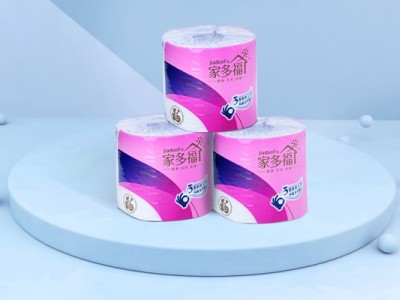The production process of toilet paper
Toilet paper is mainly used for people's daily hygiene, and is one of the indispensable paper types for the people. In order to make toilet paper soft, mechanical methods are usually used to make the paper wrinkle to increase the softness of the toilet paper. There are many raw materials for making toilet paper. Commonly used are natural non-polluting raw materials such as cotton pulp, wood pulp, bamboo pulp, and straw pulp.
Toilet paper requires no toxic chemicals, no raw materials that are irritating to the skin, no mold or viral bacteria residues. The characteristics of toilet paper are strong water absorption, no pathogenic bacteria, soft paper, uniform thickness, no holes, and even wrinkles. The color is consistent and does not contain impurities. If the small rolls of double-layer toilet paper are produced, the perforation pitch should be consistent, and the pinholes should be clear, easy to tear, and neat.

Sanitary paper, which is a necessity for people's daily life, is divided into two categories according to different uses: one is tissue paper, and the other is crepe toilet paper.
According to relevant experts, consumers' use of inferior toilet paper will endanger their health, especially women and children, which are prone to diseases and should attract the attention of consumers. For example, bamboo fiber paper made of bamboo pulp has strong bones and a "sound". Bamboo fiber is healthy and flexible, contains bamboo kun, which is anti-bacterial and skin-friendly. Strong water absorption and safer.
Consumers should carefully distinguish and choose when buying toilet paper, and avoid buying low-quality paper towels that contain a large amount of fluorescent agents and brighteners. After fluorescent agents are absorbed by the human body, they will become potential carcinogens, and long-term use will affect the health of themselves and their families.




